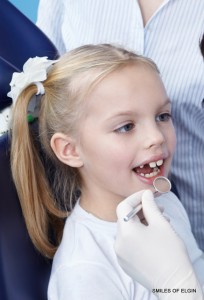1209 Dundee Avenue Elgin, IL 60120
What is a Malocclusion?
A malocclusion is an incorrect relationship between the maxilla and the mandible or a general misalignment of the teeth. Malocclusions are very common and most individuals experience at least one to some degree.
The malocclusion is thought to be a result of genetic factors combined with poor oral hygiene habits and other habits that affect the stomatognatic system (pushing the tongue between the teeth, thumb sucking, pacifiers etc).
Mild to moderate malocclusions require treatment by a qualified orthodontist.
The 3 Main Classifications of Malocclusion
- Class I – The occlusion is typical, but there are spacing or overcrowding problems with the other teeth.
- Class II – The malocclusion is an overbite – the upper teeth are positioned further forward than the lower teeth. This can be caused by the protrusion of anterior teeth. Usually the maxillary bone is more developed or the mandible is underdeveloped.
- Class III – Prognathism also known as “underbite” is a malocclusion caused by the lower teeth being positioned further forward than the upper teeth. An underbite usually occurs when the jawbone is large or the maxillary bone is short.

Reasons for Treating Malocclusions
A severe malocclusion may lead to skeletal disharmony of the lower face. In a more extreme case, the orthodontist may need to work in combination with a maxillofacial surgeon to reconstruct the jaw. It is never too late to seek treatment for a malocclusion and children and adults have completed orthodontic realignment procedures.

These are some of the main reasons to seek orthodontic treatment for a malocclusion:
Reduced risk of tooth decay – The constant wearing of the same teeth can lead to tooth erosion and decay. Malocclusion is the reason for the irregular wear of the teeth.
Better oral hygiene – A malocclusion can be caused by overcrowding. When teeth are crowded, it can be difficult to clean the teeth and gums effectively. It is much easier to clean straight teeth that are properly aligned, which is the goal of the orthodontic therapy.
Reduced risk of TMJ – Temporomandibular jaw syndrome (TMJ) is thought to be caused by a malocclusion. Headaches, facial pains and bruxism (grinding teeth during sleep) all result from the excessive pressure to the temporomandibular joint. Orthodontic therapy in these cases reduces pressure, and eliminates these symptoms.
Office Hours
| Monday | 10:00 to 6:00 |
| Tuesday | 10:00 to 6:00 |
| Wednesday | 11:00 to 8:00 |
| Thursday | 10:00 to 6:00 |
| Friday | 10:00 to 6:00 |
| Saturday | 8:00 to 3:00 |
| Sunday | Appointment only |



Recent Comments